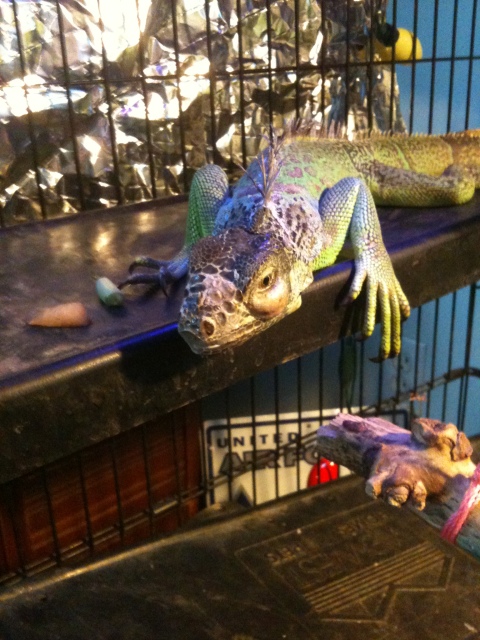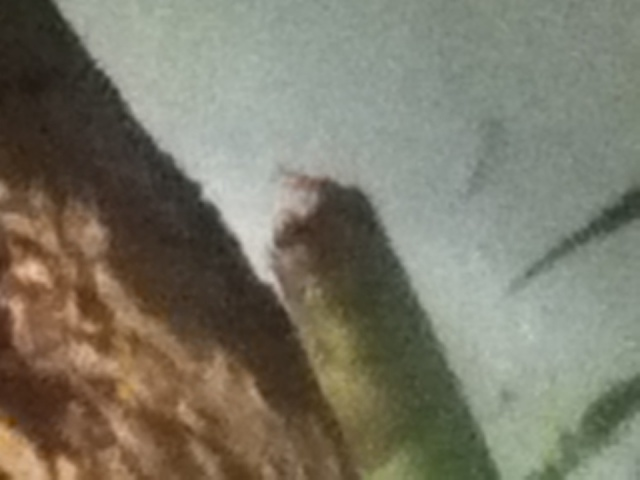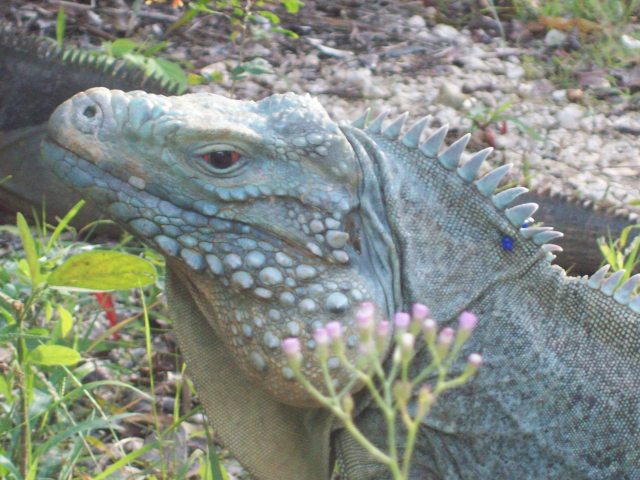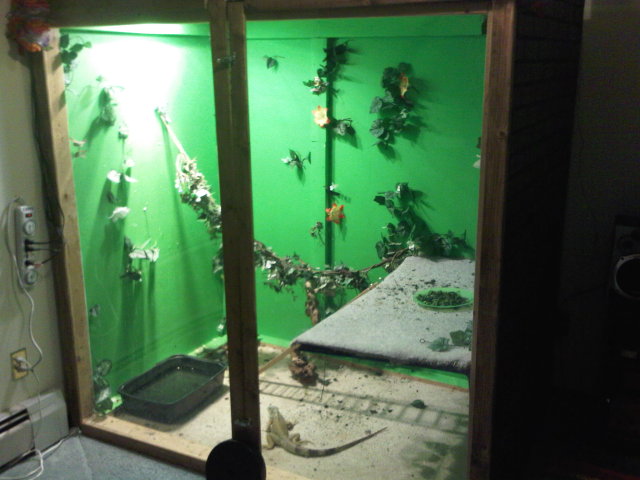QuestionHi,
My male three year old 3.2ft. iguana named Desoto, is quite the pig when it comes to eating. He would charge and attack the food the second I would place it in the cage, practically inhaling the food until every scrap was consumed. He has a huge 5 foot wide by 4 foot tall glass enclosure. Complete with a waterfall, reptile UVB lamps, a heat lamp, and plenty of artificial plants to climb on. He eats better than I do with a verity of fruits and veggies, but mostly collard greens, mustard greens, dandelions, turnip greens,and a small portion of spinach,with a light sprinkle of calcium. But the last few days Ive noticed a huge decrease in appetite. He'll only have one or two bites of food, thats it! The vet couldn't find anything visually wrong with him. I dont think it has to do with breeding season, because he is not acting aggressive, he seems really depressed he stays in one spot all day rather than his usually active self. I found out recently that spinach is bad because it causes crystal deposits in the kidney. Is that a possibility? I used spinach almost daily his entire life. Could it be parasites? Ingesting a foreign object? He doesn't appear to be losing weight he looks normal minus the appetite loss. But he hasn't been going to the bathroom daily either he goes about every two-three days now. [Please help].. I just lost my other iguana named Draco to a rectal prolapse last week.
Kaela
AnswerHi Kaela,
I'm sorry for your loss of Draco.
I have a 4 yr old ig that is not eating very well right now....is not aggressive in any way...and is not showing any other signs of breeding season other than his femoral pores are out farther than normal and he is leaving wax plugs here and there.
Is your boys pores larger and are you finding wax plugs? He too is normally very active but now if he makes rounds in his cage once or twice a day, its lots. He has remained a sweetheart.
Does your boy have more orange on him than normal? Maybe just a tint to his legs?
Even without daily spinach(small amounts aren't generally a problem), kidney problems can happen...it can be genetic. A blood test can tell you if that's what it is. A fecal can tell you if it parasites. I recommend blood work, a fecal and x-rays.
Eating less, there will be less out put from the other end.
There have been new findings with uvb, type, distance, etc. I will include some info on that. Also, when was the last time you changed your uvb? That can make a difference on their output, as can the distance, etc.
LIGHTING:
Supplying uvb can be done in a few ways. By special lights
that come in fluorescent tubes or special screw in bulbs
(mercury vapor)that are designed to produce uvb and heat.
The tubes do not produce heat. UVB is needed by the reptile to be able to absorb the calcium in the foods they eat.
With out the uvb, they will develop metabolic bone disease.
With the tubes, they must say that they produce BOTH uvb and
uva. The uvb needs to be 5% or higher. Repti Sun 10.0 and the Repti Glo 8.0's are a great source for uvb. The old "favorites" are the repti sun 5.0 or the Iguana light..which are the same tube, just different package.
There are tubes that say ''full spectrum'' but they do not produce any uvb.
These need to be positioned 6-8 inches over the reptile for the 5% and 8% and 8-10 inches for the 10% so
that they get the uvb that is needed. The tubes need to be replaced every 6-9 months as that they stop producing UVB long before they stop producing light.Using a fixture that holds two uvb tubes of at least 3 feet in length will provide adequate uvb for your iguana. There has been new studies that have proven that compact uvb lights, both the spiral/coil type and the ones that look like long "U's" laying on their side and a few other brands are causing what basically amounts to snow blindness in reptiles. To read more on this, you can go to http://www.uvguide.co.uk/index.htm
On the mercury vapor , they also produce heat. They also
produce the uvb and uva. The best on the market now are the
Mega Rays.(http://www.reptileuv.com) The distance from these are greater than the uvb tubes and the directions must be followed that
are listed for the light. When using the mercury vapor
lights, you don't need to have one light for uvb and one for
heat. The Mercury vapor lights provide both.
For daytime heat, if using the tube uvb, regular household
incandescent light bulbs produce heat. The wattage will
depend on the size of your iguanas enclosure. and the room temperature. Using Halogen or a nice bright white daytime bulb is the best for daytime heat.
There are also new findings that the uvb producing fluorescent tubes don't put out a good bright light that the iguanas need and respond to. On the link above (www.reptileuv.com) is more info on that.
Of course, the best uvb is from the
sun and if you are in an area that you are able to take your reptile outside in a proper enclosure, (Never a tank or enclosed, solid cage)

 Green Iguana Godzilla Swollen Under Eye
Question
Godzilla Left Eye Chee
Our green iguana
Green Iguana Godzilla Swollen Under Eye
Question
Godzilla Left Eye Chee
Our green iguana
 My pet iguana
Question
My iguana tail
My iguana wa trying to r
My pet iguana
Question
My iguana tail
My iguana wa trying to r
 Iguana Eye Color
QuestionQUESTION: Ms. Diane,
Please, can you tell me i
Iguana Eye Color
QuestionQUESTION: Ms. Diane,
Please, can you tell me i
 iguana and cat
Question
Djs home
hi my name is justin, i have a green
iguana and cat
Question
Djs home
hi my name is justin, i have a green
 Sick iguana
QuestionIggy
QUESTION: Hi Diane.
IGGY, m
Sick iguana
QuestionIggy
QUESTION: Hi Diane.
IGGY, m